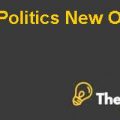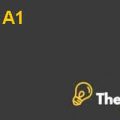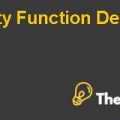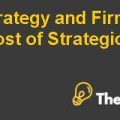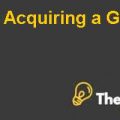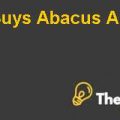
Philip Morris- Project Valuation Case Solution
Question 1
Estimating cost of Equity
For the calculation of the cost of equity the model that is being used is the Capital Asset Pricing Model (CAPM) model. This model is widely used for the calculation of the cost of equity. The model is simplified and easy to use as compared to the other model such as Fama-French Three Factor Model and Carhart’s Four Factor Model(Kampman, 2011). The data available for this case is sufficient and suitable for the application of this model to calculate the cost of equity. The CAPM model is quitesimple and one can establish the cost of equity for any given company in no time, where it uses one beta which eradicates much complexities. Thus, this model is being used widely. Other models are complicated, time consuming and needs more technical knowledge but they might give more reliable results. However, the result from the CAPM is reliable enough to use for the projection.
Estimating cost of Debt
As similar to the simplified CAPM model for the cost of equity, the simplified approach for the calculation of the cost of debt will be used. The cost of debt will be estimated using the bank interest rate that is being paid by the company for its debt obligations. In this approach the interest rate that is the rate of the company’ cost of debt. This method of calculating the cost of debt is widely used by investors and internally as well. Other methods are complicated and are time consuming as well.
Question 2
Cost of equity
Using the CAPM model, cost of equity is estimated. To estimate the cost of equity the CAPM formula is:
E(Ra) = Rf + ßa × E(Rm – Rf)
Where,
E(Ra) = Expected return on assets
Rf = Risk-free rate
ßa = Beta of the asset
ERm = Expected return on market
First of all, the beta was extracted from the information given in yahoo finance about the company that is 0.99812. The risk free rate is taken as the rate of 30 year U.S Treasury bond yield rate which is 2.62%. Finally, the expected return on market is needed to calculate the cost of equity. For this the expected return on market is assumed, and to make the assumption more reliable the assumption is taken from the web sources (Philip Morris International Inc WACC, n.d). With all the variable data the cost of equity is then calculated to be 10.11%.
| Expected Return On Asset Or CAPM | = | Risk free rate | + | Beta | x | Expected Return on Market | |||||
| 2.62% | + | 0.99812 | x | 7.50% | |||||||
| Cost of Equity | = | 10.11% | |||||||||
Sensitivity analysis of the cost of equity is made, and sensitivity is test for the risk free rate and expected market return. From the sensitivity analysis, it is seen that the cost of equity is more sensitive to change in expected return on market. An increase of 15% in the expected return on market increases the cost of equity to 11.23% with 1.12% increase. The decrease of 15% in the expected return on market decreases the cost of equity to the 8.98% with the same difference. It is also analyzed that the cost of equity is directly proportional to the expected return on market.
| Risk Free Rate | Cost OF Equity | |
| 15% up | 3.01% | 10.50% |
| Base case | 2.62% | 10.11% |
| 15% down | 2.23% | 9.71% |
| Expected Return On market | Cost OF Equity | |
| 15% up | 8.63% | 11.23% |
| Base case | 7.50% | 10.11% |
| 15% down | 6.38% | 8.98% |
....................
This is just a sample partial case solution. Please place the order on the website to order your own originally done case solution.

